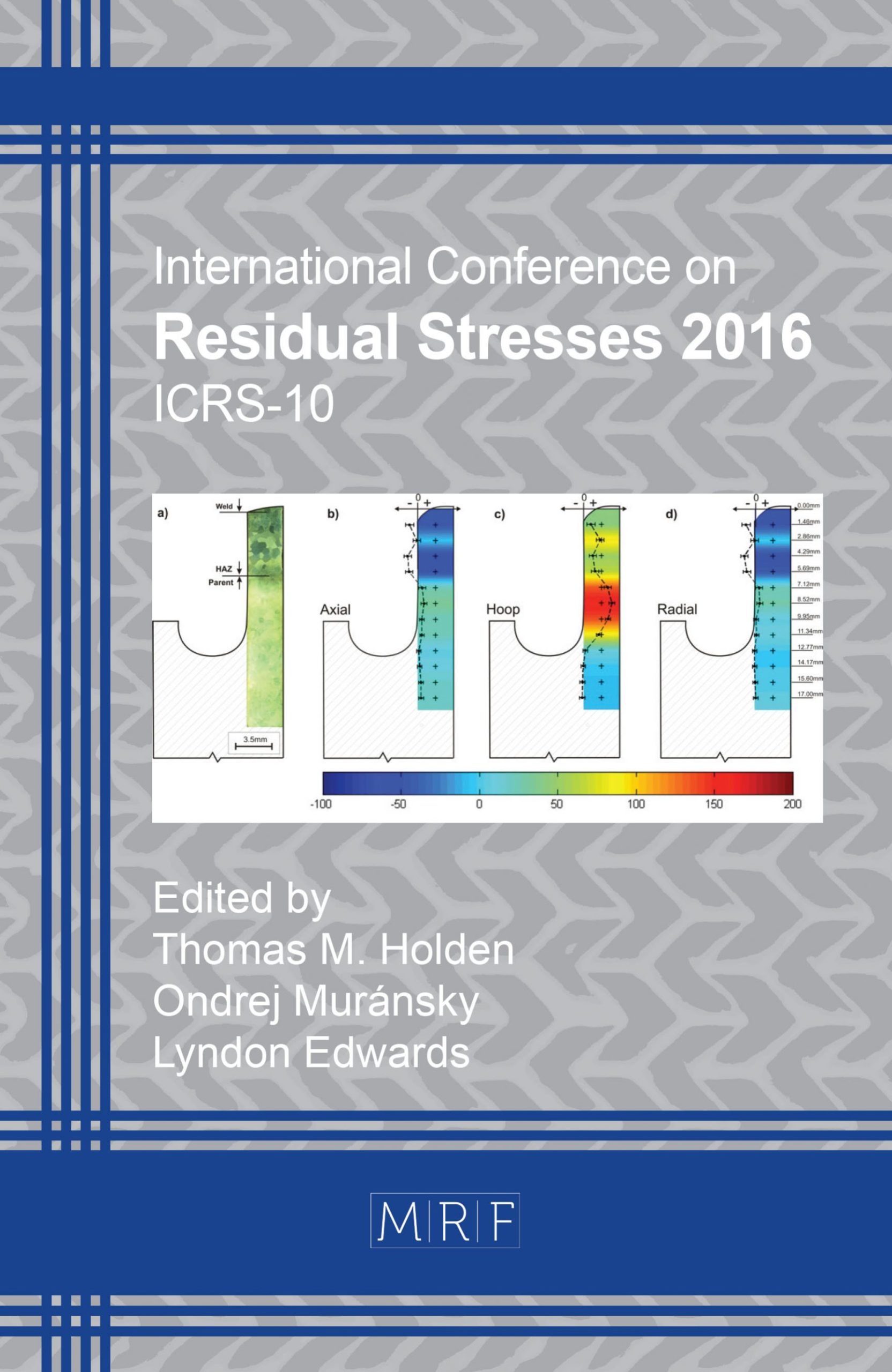Challenges in the Calculation of Residual Stresses in Thick-walled Components
J. Klassen, T. Nitschke-Pagel, K. Dilger
download PDFAbstract. Numerical simulations of welding induced residual stresses and distortion is still a challenging task, especially with regard to thick-walled structures. These structures are mostly welded with high numbers of layers. Usually adjacent welds influence each other. Therefore, simple 2D calculations become unsuitable, thus, leading to the necessity of 3D transient calculations. In turn 3D multi-layer welding simulations require large finite element models. To account for steep temperature gradients in the weld and the heat affected zone each layer has to be modeled using rather fine elements. Thus, numerical models become very large regarding the degrees of freedom. Significant simplifications are common practice, although it is known that these might cause inaccurate or even wrong results. The current paper presents 3D transient finite element simulations of welding residual stresses and distortions in multi-layer welds of 29mm thick-walled components of a construction steel grade S355N. Furthermore, several modelling simplification approaches were applied. During welding temperature profiles were recorded to validate numerical models. After each layer residual stress measurements were carried out by means of X-ray diffraction (XRD). Furthermore, some weld fill levels were investigated by neutron diffraction (ND). This allowed the comparison of real through-thickness residual stress distributions with numerical simulations.
Keywords
Residual Stresses, Numerical Welding Simulation, Multi-Layer Welds
Published online 12/22/2016, 6 pages
Copyright © 2016 by the author(s)
Published under license by Materials Research Forum LLC., Millersville PA, USA
Citation: J. Klassen, T. Nitschke-Pagel, K. Dilger, ‘Challenges in the Calculation of Residual Stresses in Thick-walled Components’, Materials Research Proceedings, Vol. 2, pp 299-304, 2017
DOI: http://dx.doi.org/10.21741/9781945291173-51
The article was published as article 51 of the book Residual Stresses 2016
![]() Content from this work may be used under the terms of the Creative Commons Attribution 3.0 licence. Any further distribution of this work must maintain attribution to the author(s) and the title of the work, journal citation and DOI.
Content from this work may be used under the terms of the Creative Commons Attribution 3.0 licence. Any further distribution of this work must maintain attribution to the author(s) and the title of the work, journal citation and DOI.
References
[1] G. Bierett, „Versuche zur Ermittlung der Schrumpfspannungen in geschweißten Stumpfnahtverbindungen,“ VDI Zeitschrift des Vereins Deutscher Ingenieure, Bd. 78, pp. 709-715, 1934.
[2] Y. Ueda, K. Iida, M. Saito und A. Okamoto, „Finite Element Modeling and Residual Stress Calculation for Multi-pass Single Welded Joint between a Plate and Penetrating Pipe,“ Modeling of Casting, Welding and Advanced Soldification Processes V; The Minerals, Metals and Materials Society, pp. 219-227, 1991.
[3] Y. Ueda und K. Nakacho, „Simplifying Methods for Analysis of Transient and Residual Stresses and Deformations due to Multi-pass Welding,“ Transactions of Joining and Welding Research Institute, Osaka University, pp. 95-103, 31 März 1982.
[4] J. Hong, C.-L. Tsai und P. Dong, „Assessment of numerical procedures for residual stress analysis of multipass welds,“ Welding journal, Bd. 77, Nr. 9, pp. 372-382, 1998.
[5] M. P. Macherauch E., „Das sin²ψ-Verfahren der röntgenografischen Spannungsmessung,“ Zeitschrift für angewandte Physik, Bd. 13, 1961.
[6] J. Dike, C. Cadden, R. Corderman, C. Schultz und M. McAninch, „Finite Element Modeling of Multipass GMA Welds in Steel Plates,“ in Proceedings of the 4th International Conference on Trends in Welding Research, Tennessee, 1995.
[7] H. Serizawa, S. Nakamura, K. Kanbe, Y. Fujita, S. Asai und H. Murakawa, „Numerical analysis of deformation in multi-pass circumferential TIG welding with narrow gap,“ Welding in the World, Nr. 57, pp. 615-623, 10 Mai 2013.































